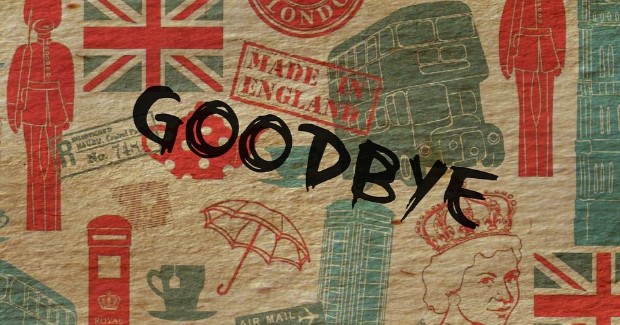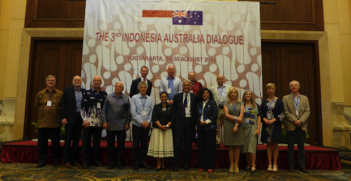Future of Europe: The Good, the Bad and the Ugly

Even with Brexit, the European Union will remain a market of more than 450 million people and a prominent promoter of Western values shared by Australia. Given that the EU has been Australia’s largest investor and economic partner for the past 25 years, it is pertinent to reflect on what an EU without Britain might look like.
With Brexit still reverberating, ample Australian media attention has been given to the political turmoil in the United Kingdom. Infighting by the British Labour Party is making a split likely. New Prime Minister Theresa May is attempting to stir her country out of the EU, trying to mitigate the negative impact of Brexit on the economy and containing plain discontent in Northern Ireland and a renewed push for independence in Scotland. Australian attention to these developments is understandable given the historical, political and economic ties that link Australia and Britain.
However, given that the EU has been Australia’s largest investor and economic partner for the past 25 years, it is also pertinent from an Australian perspective to reflect on what an EU without Britain might look like. There are three conceivable scenarios: the good, the bad and the ugly.
The ugly: populists take over
In the ugly scenario, Brexit is only the beginning of a populist avalanche that devastates the EU. This was the prediction of diehard Brexiteers like Nigel Farage. Fellow eurosceptic populists such as Geert Wilders in the Netherlands, Marine Le Pen in France, Norbert Hofer in Austria, Frauke Petry in Germany, Matteo Salvini in Italy, Jimmie Åkesson in Sweden and Thulesen Dahl in Denmark are of a similar mind. One or two of them could be elected with a position strong enough to set an anti‐European agenda. This is an imminent danger in several EU member states. A breakup in continental Europe, especially by a big country such as France, would seriously jeopardise the whole European project.
Mainstream parties have so far tried to pander more to the left or to the right in the hope of grabbing votes from populist parties, with limited success at best. This was, for instance, the gamble that cost David Cameron and the UK their EU membership. In other cases centre‐left and centre‐right parties have had to unite in coalitions to hinder populists from taking power, as has happened in France. The theory that a new political divide has arisen in the West, no longer between right and left, but between open and closed, has some merit. If this is true in Europe, the “closed” camp—a mix of populism, nativism and anti‐globalism—is on the rise. For many Europeans “globalisation” is a relatively abstract notion, but the EU is a concrete and familiar proxy for it.
The bad scenario: Europe stalls in the mud
Jacques Delors, a former head of the European Commission, jokingly defined the European Community as a “non‐identified political object”. The quote has survived the test of time because it contains a grain of truth. For some, the changing nature of the EU is the secret to the relative success of the project so far. But there is a real possibility after Brexit that the EU stops adapting to new situations and sinks in confusion. This is especially so in light of remarkable challenges such as immigration from the Middle East and Africa, meagre economic growth, poor fiscal and banking integration and the EU’s lack of democratic legitimacy as perceived by its citizens.
Heads of government in some countries might pander to the fear of the populist wave threatening their hold on power and therefore assume intransigent, nationalist positions in areas that necessarily clash with the interests of other countries. The European Commission (the closest equivalent to an executive power in the union) could become paralysed between the demands of the European Parliament and the European Council (made up of heads of government). Discontentment towards Europe could continue to grow even in the most traditionally pro‐European countries. The financial system could try to stay afloat but without the measures needed to strengthen it. Immigration could be tackled with a piecemeal approach rather than a European one. Gradually, but inevitably, the eurozone could implode followed by the rest of the EU.
There can be a good one: Europe takes new life
There is a good and altogether possible scenario too. Europe has the advantage of abundant resources and a long and successful history of integration to help it face its challenges, even today. In this scenario Europe sets priorities addressing the citizens’ most important concerns such as jobs and immigration using a regional approach. Social integration is addressed through interculturalism.
Core values are reacknowledged and fostered. A variable geometry or flexible integration approach (already foreseen in the Treaty of Amsterdam) guides European integration. Provided the four freedoms (goods, services, capital, people) are fulfilled, different groups of countries within the club could undertake enhanced cooperation in areas of common interest (the euro is one example). Banking union is negotiated and consolidated. Expansion is postponed, but not renounced, with the Balkan countries that are surrounded by EU territory still in line to join when they meet the criteria and conditions improve.
European integration, which started without Britain as a member, can continue without Britain into the future. The West—and not only Europe—is facing a rising wave of populism that threatens values that we now take for granted such as the possibility of peace through international law, prosperity through open trade and liberal democracy with a tolerant public sphere. The EU is too important a part of the West to welcome a bad or ugly scenario. It is in everybody’s interest that it succeeds.
Dr Pablo C Jiménez Lobeira is an adjunct lecturer at the Institute of Ethics & Society, University of Notre Dame Australia.
The article is published under a Creative Commons Licence and may be republished with attribution.





